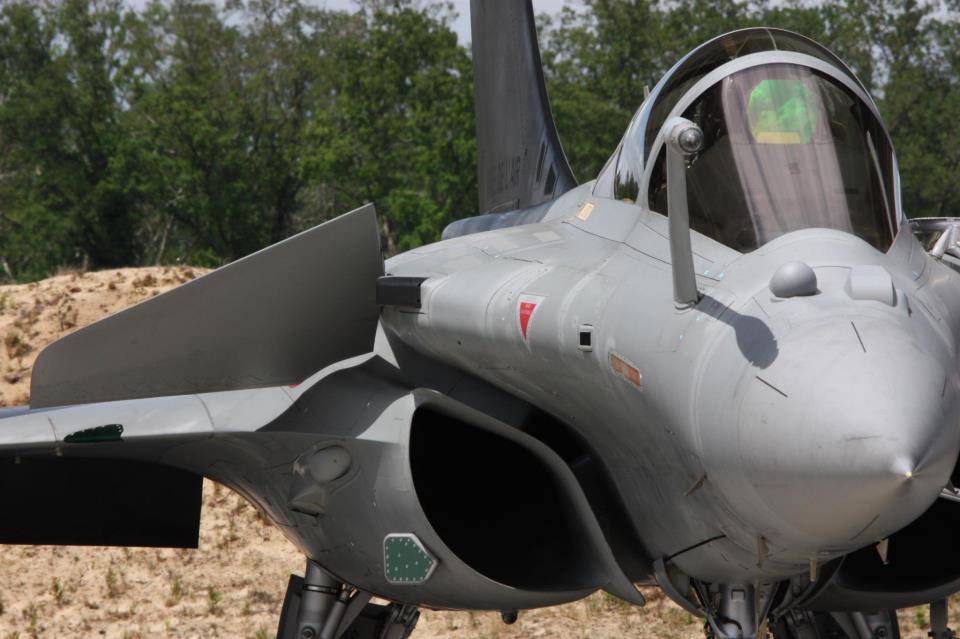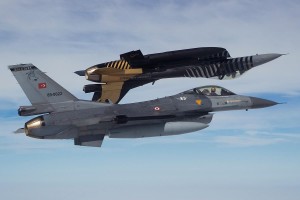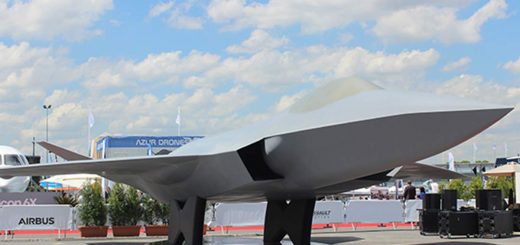Nuclear Days / European Nuclear Capabilities
The Strike evaluation Exercise Steadfast Noon 2012 (SFNN 2012), which was held late last year at the Belgian Air Component base at Kleine Brogel, demonstrated that NATO still maintains an airborne nuclear component, despite the fact that the Cold War ended more than two decades ago.
Cold War Legacy
In the mid-1980s, NATO boasted an impressive arsenal of tactical nuclear weapons. Nine nuclear systems were deployed in Europe, including nuclear-tipped surface-to-air missiles (Nike Hercules), surface-to-surface missiles (Lance and Pershing) and ground-launched cruise missiles, as well as heavy artillery capable of delivering nuclear rounds. Specialist army engineers were in charge of handling nuclear mines in wartime, and maritime patrol aircraft were capable of dropping nuclear armed depth bombs for anti-submarine warfare. All these capabilities were discarded one by one during the immediate post-Cold War era.
However, one capability has survived to this day. NATO fields a limited number of so-called dual capable aircraft (DCA), which can carry both conventional and nuclear stores. US nuclear capability in Europe remains a pillar of NATO unity. NATO’s dual capable aircraft contribute directly to nuclear deterrence. US submarines equipped with Tomahawk land attack missiles (TLAM-N) also regularly operate in the European theatre; however, these nuclear-tipped cruise missiles will be retired as part of the changes to the US nuclear arsenal announced in the Nuclear Posture Review 2010.
According to US tactical nuclear weapons in Europe, 2011, a publication by Robert S Norris and Hans M Kristensen in the Bulletin of the Atomic Scientists, approximately 180 US B61 tactical nuclear weapons are still deployed in Europe. These bombs are stored at six bases in five countries; the Netherlands, Belgium, Germany, Italy and Turkey. The majority are kept in US facilities at Aviano Air Base (AB) in Italy and Incirlik AB in Turkey. Volkel AB in the Netherlands, Kleine Brogel AB in Belgium, Büchel AB in Germany and Ghedi AB in Italy are also home to limited numbers of B61 bombs.
These nuclear gravity bombs are in custody of US personnel stationed locally as part of a series of Munitions Support Squadrons (MUNSS). The 52nd Munitions Maintenance Group (MMG) at Spangdahlem AB provides a single organisation to oversee these geographically separated MUNSS. It is likely that there are a limited number of other NATO air bases where nuclear weapons storage vaults are maintained, but currently not in use. The USAF announced a contract in 2004 for the upgrade of nuclear weapons storage and security systems at 12 NATO air bases, according to Ian Anthony and Johnny Janssen in The future of nuclear weapons in NATO, 2010.
Nuclear-Capable Aircraft
Lockheed Martin F-16s and Panavia Tornados, both iconic late Cold War legacy fighter bombers, form the backbone of NATO’s current tactical nuclear delivery capability. USAF F-15E units seem to have relinquished their nuclear task in recent times, because demand for Strike Eagle in conventional missions is exceeding available assets. This doesn’t mean that the F-15E has lost dual-capability altogether, just that these units currently do not train for nuclear weapons delivery. The nuclear readiness requirements for those units that do continue to take care of the strike mission have been dramatically reduced over the years and their ability to assume combat readiness posture is now measured in months, rather than minutes.
These fourth-generation DCA will start to reach the end of their service lives within this decade. At the same time, the inventory of B61 tactical nuclear bombs is in need of a life extension programme. Drastically shrinking defence budgets in European NATO member states complicates recapitalisation of nuclear-capable fighter aircraft. In addition, the introduction of advanced air defence systems may challenge the future penetration and delivery credibility of these nuclear forces and other supporting airborne assets. Some NATO countries are already pursuing an option for replacing their DCA fighter forces by investing in the development of the Lockheed Martin F-35, known as the Joint Strike Fighter (JSF), which has an operational requirement for delivery of tactical nuclear weapons. NATO’s nuclear posture is also expected to be influenced in the near future by Belgium not taking part in the JSF programme.
Meanwhile, German Tornado IDS (interdictor/strike) units are in the process of receiving Typhoon fighters that are not dual-capable. In 2010, German Ministry of Defence (MoD) figures indicated that maintaining a total number of 46 Tornado IDS aircraft was deemed essential to guarantee Germany’s current share of NATO’s tactical nuclear capability. This also seems to explain why Büchel AB will be maintained as a Tornado fighter bomber base, despite German Tornado numbers being cut from 185 to 85 before 2017 as part of the recently announced reforms of the German armed forces. Integrating the strike task with Eurofighter is not planned at this time. Furthermore, it is likely that European corporations will be reluctant to share their aircraft technical data with the US. All this means that only the Netherlands, Italy and Turkey are now expected to replace their current fighter aircraft with successors that could provide dual-capability.
Growing Uncertainty
After having joined NATO after the end of the Cold War, Poland is a country in favour of broad NATO support for continued deployment of US tactical nuclear weapons in Europe. However, some politicians in countries where US tactical nuclear weapons are stationed such as Germany, Belgium and the Netherlands have questioned their relevance in recent times. This contradiction is reflected in NATO’s new Strategic Concept, which is rather vague when it comes to US tactical nuclear deployment in Europe. While it states that “the supreme guarantee of the security of the Allies is provided by the strategic nuclear forces of the Alliance – particularly those of the United States,” it also says “the independent strategic nuclear forces of the United Kingdom and France, which have a deterrent role of their own, contribute to the overall deterrence and security of the Allies.”
Coincidentally, there seems to be discord within US circles as well. The report of the Secretary of Defense Task Force on Department of Defense (DoD) Nuclear Weapons Management of December 2008, was instigated as a result of widespread atrophy of the strategic nuclear mission within the USAF. It states: “In the long-held view of US European Command (USEUCOM), deterrence provided by US Strategic Command’s strategic nuclear capabilities outside of Europe are more cost effective. USEUCOM argues that an ‘over the horizon’ strategic capability is just as credible. It believes there is no military downside to the unilateral withdrawal of nuclear weapons from Europe. This attitude fails to comprehend – and therefore undermines – the political value our allies place on these weapons, the political costs of withdrawal, and the psychological impact of theirvisible presence as well as the security linkages they provide”.
The same report also states that “while USAFE’s surety appears sound, nuclear operations units have fallen victim to a similar weakening that afflicts their Continental USA (CONUS)-based counterparts. USAFE headquarters staff lack a requisite-level of operational DCA fighter expertise. The USAFE units that maintain nuclear operational readiness are uniquely challenged as they are the only such fighter units in the United States Air Force trained to perform the nuclear mission. From an aircrew perspective, the mission may be less operationally demanding than some other conventional missions; however, there is no margin for error. When aircrews arrive at nucleartasked units, they typically have had minimal (if any) training in nuclear weapons delivery procedures.”
At the same time, Task Force panel members indicated that USAFE commitment to the safe and secure storage of nuclear weapons in Europe was encouraging, which contrasted sharply with findings on the American continent.
Exercise Steadfast Noon 2012
Kleine Brogel AB was home to the latest edition of this multi-national exercise between October 15 and October 26. Organised each year, it evaluates multinational interoperability with US systems intended for strike missions within NATO. Security, which is provided by varying combinations of US and host nation security personnel, is one of the issues assessed during the exercise. Ground crews of nuclear capable NATO air units are cross-trained in loading and employing nuclear bombs from different DCA. In addition, participating aircrews conduct a series of strike missions to assess their currency in using the tactics and procedures needed to successfully plan, execute and evaluate this specific kind of operation. Assessing command and control procedures is another goal.
Kleine Brogel hosted Italian Air Force (6° Stormo) and German Air Force (JBG 33) Tornados as well as Royal Netherlands Air Force (312 Squadron) and USAFE (31st FW) F-16s. The previous edition of Steadfast Noon at Volkel AB also featured some Turkish Air Force aerial assets – three F-16Cs from Balikesir AB took part during the first week of the exercise in
2011. This demonstrates that participation in Steadfast Noon is not just limited to US or coalition nuclear certified air units stationed at the above bases. Over the years NATO has developed a wider approach to engaging non-nuclear allies in the NATO nuclear posture through a programme known as ‘SNOWCAT’ (Support of Nuclear Operations with Conventional Air Tactics). This is why support aircraft that provide suppression of enemy air defence (SEAD) or offensive counter air (OCA), for instance, can also take part. In addition, some NATO air units might still be nuclear capable, albeit without having nuclear weapons at their air bases. This seems to have been the case with the two Turkish F-16 wings, one of which is now believed to have lost its nuclear task (see table). Some Turkish sources indicate that the Turkish Air Force has given up the strike task altogether, just like its Greek counterparts. In this case, their F-16s would still be used in a supporting role because the Turkish Government continues to feel very strongly aboutburden-sharing obligations within NATO. There is a common belief in Turkey that the US weapons constitute a credible deterrent against threats such as Iran’s nuclear programme and the possible further proliferation of nuclear weapons in the neighbouring region in response to Tehran.
European Capabilities
As mentioned in NATO’s new Strategic Concept, France still maintains its own independent strategic airborne nuclear component. The French Air Force has three nuclear-certified air bases (Bases Aériennes à Vocation Nucléaire – BAVN) at Istres, Saint-Dizier and Avord. Its nuclear-capable fighter aircraft are also capable of conducting conventional operations, as was demonstrated during Operation Harmattan (the French contribution to Operation Unified Protector over Libya) by Mirage 2000Ns executing numerous missions. Mirage 2000N K3s (EC 2/4 ‘Lafayette’ atIstres) and Rafale B F3s (EC 1/91 ‘Gascogne’ at SaintDizier) have been capable of carrying the new ASMP-A (Air-Sol Moyenne Portée-Amélioré – improved medium range air-to-surface missile) nuclear-tipped cruise missiles since October 2009 and July 2010 respectively. Avord was in the process of having its facilities upgraded for ASMP-A operations during 2010, according to official French MoD figures.
Exercises are held on these nuclear-certified air bases on a regular basis; for instance BA 113 Saint Dizier- Robinson was the scene of ‘Airnuc 2011’, a national nuclear safety exercise held between September 13 and 14, 2011.
ASMP-A operations are not just limited to the air force. Aeronavale Rafale M F3s of both 11 and 12 Flotille can be equipped with the nuclear system – Rafale M has taken over the carrier-based airborne nuclear role from the Super Etendard Modernisé, which is gradually being phased out.
It seems likely that a number of nuclear weapons storage vaults are kept under caretaker status at former Forces Aériennes Stratégiques (Strategic Air Forces) air bases. Various publications indicate that the air bases at Mont-de-Marsan, Luxeuil and, to a lesser extent Cazaux and Orange, were available for nuclear operations with ASMP-A’s predecessor system, the ASMP.
British nuclear forces have nowadays been consolidated in a maritime component of submarines equipped with Trident strategic nuclear missiles. March 31, 1998, marked the stand-down of the RAF’s nuclear weapon capability. The complete stock of WE177 nuclear gravity bombs was withdrawn from service and dismantled at the Atomic Weapons Establishment at Aldermaston.
Status of US tactical nuclear weapons in Europe, post-Cold War| Country | Air base | Custodian | Platform | Remarks |
| Netherlands | Volkel AB | 703rd MUNSS | F-16 MLU (RNLAF, 312 Sqn) | Nuclear certified |
| Belgium | Kleine Brogel AB | 701st MUNSS | F-16 MLU (Belgian Air Component, 10 Wing) | Nuclear certified |
| Germany | Büchel AB | 702nd MUNSS | Tornado IDS (Luftwaffe, JBG33) | Nuclear certified |
| Nörvenich AB | Vaults – possible caretaker status | |||
| Memmingen AB | Closed | |||
| Ramstein AB | Vaults – possible caretaker status | |||
| Spangdahlem AB | 52nd MMG | Non-nuclear; MMG provides command to 701/702/703/704 MUNSS | ||
| Hahn AB | Closed | |||
| Italy | Ghedi AB | 704th MUNSS | Tornado IDS (AMI, 6 Stormo) | Nuclear certified |
| Rimini AB | Now non-nuclear | |||
| Aviano AB | MUNSS of 31st Fighter Wing | F-16C (USAFE, 31st FW) | Nuclear certified | |
| Turkey | Incirlik AB | 39th Air Base Wing | Nuclear certified | |
| Ak?nc? AB | F-16C (THK, 4th Wing) | Vaults – possible caretaker status | ||
| Balikesir AB | F-16C (THK, 9th Wing) | Vaults – possible caretaker status | ||
| Erhaç AB | Vaults – upgrade unlikely | |||
| Eski?ehir AB | Vaults – upgrade unlikely | |||
| Greece | Araxos AB | Greek F-16Cs not nuclear capable | Vaults – possible caretaker status | |
| UK | RAF Lakenheath | USAFE F-15Es no longer nuclear capable | Vaults – possible caretaker status | |
| RAF Upper Heyford | Closed | |||
| RAF Bentwaters | Closed |
Source: By Pieter Baastiens assesses – NATO’s airborne nuclear capabilities in Europe.
Air Forces Monthly 2013 02 (www.airforcesdaily.com)

























